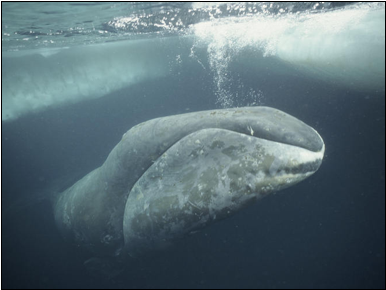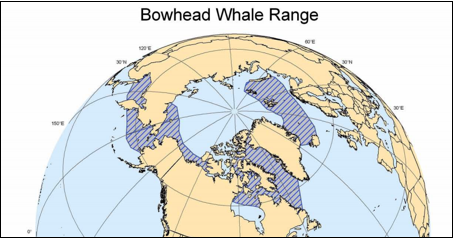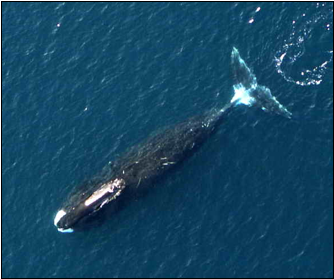It’s Christmas season and for all those of you looking to the North Pole at this time of year, we have a very special series of blogs lined up! Every Monday leading up to Christmas we will highlight one Arctic species of cetacean. Today we have a species formerly, rather fittingly known as, the Arctic whale.

Bowhead Whale
(Balaena mysticetus)
This cetacean gets its name from the ‘bow’ shape of its mouth.
Also known as: Greenland Right Whale or the Arctic Whale
Size: 10 – 20 m
Weight: 60 – 80 tonnes
Appearance: Large Mysticete, predominantly black with white chin patch and lacks a dorsal fin. Produces a ‘V’-shaped bushy blow, which can reach a height of 7 metres.
Diet: Plankton and crustaceans
Population: Approximately 15,000 individuals
Pod Size: 1-6

Habitat: Bowhead whales are the only species of baleen whale to spend its entire life in Arctic waters and are often found close to the Arctic ice shelf. This species spends the winter months in the Bering Sea and migrates northwards at the start of the spring up into the Chukchi and Beaufort Seas.
Distribution: Found in Arctic seas following the retreat and advance of the pack ice.
Did you know?
- Bowhead whales can live ver 100 years old and the oldest recorded bowhead whale lived to be 211 years old!
- Bowhead whales have the longest baleen of all filter-feeding whales, growing up to 3 metres in length
- Their blubber can be more than a foot thick – thickest out of all the whale species (that’s a lot of blubber!)
- Their heads can make up as much as 40% of their body length, which helps the whales break through the Arctic ice!
Threats and Conservation Status
Bowhead whales were first discovered by commercial whalers in the early 1600’s and were consequently hunted for their meat, blubber and oil until the early 1900’s. Populations were hunted nearly to extinction which meant whales were harder to hunt, and due to the creation of oil substitutes, hunting bowhead whales was also less profitable. In 1986, the worldwide moratorium on whaling came into effect, which has allowed bowhead whale populations to slowly recover and as of 2012, the species was given the conservation status of ‘Least Concern’ by the IUCN.
Picture credits:
Picture of Bowhead whale head from the BBC
Aerial picture of bowhead from NOAA
Distribution map from NOAA

























